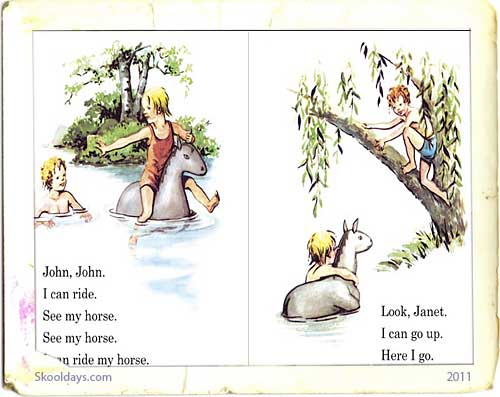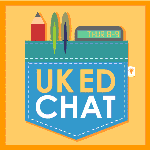The past week has passed like a dream. Last Saturday, I took the ferry to France for a week of heavy gardening. A whole day of travelling, four days of gardening and another whole day to get home. It was, what Richard Wiles in Bon Courage called a “red eye trip”, but, the fresh air, twelve hours each day working outdoors in sunshine and eating well, allowed me to get home tired but refreshed.
This past weekend, although I occasionally engaged with Twitter, watching people enjoying their Saturday at Oxford, either at the Reading Spree or Research Ed, I was just a little too tired to indulge in the banter that ensued. I have to say that the incessant attempts to score points in different ways marrs professional discussion.
Let’s put two conferences together from a distance. One focused on the wealth of literature that is available to children today. The second conference seemed to report on the need for phonics decoding. The polarised “discussion” had the hallmarks of a bare-knuckle fight.
When I started in 1974, the reading diet was limited, with Ginn 360 central to the scheme, with several much older schemes accompanying. I resourced my own class library from charity shops at 5p and 10 a time, just to offer a wider range of reading material. A home-school reading diary became the school reading record, with parents and teachers responding to reading details. Non-fiction library was the main source of “knowledge” from reading. As many of these books were over fifteen years old, they were often a little less than useless.
In 1974, hand-made resources underpinned the accompanying phonics teaching, with a mixture of cards that could be put together to make words or perhaps board games where children got counters for knowing sounds on which they landed and reading words. I created a variety of ancillary resources that allowed children to piece together words. Phonics was, as it is now, a means to deconstruct and reconstruct words that a child might encounter to be read. Where whole words were built, it was the aspiration that these words should be retained as whole units. These were incorporated into a “scheme” called “Sentence Maker”, where whole words were put into a holder to make a full sentence that would then be copied. Blank cards allowed for attempt and correction.
In 1984, I started a two year, part-time Advanced Dip Ed in language and reading development through Southampton University. This was to balance my earlier science background. It opened my eyes to the broader discussions of the time. Any CPD is likely to be of it’s time, rehearsing earlier and current thought. This course provided the background to developing the reading scheme when I became a headteacher.
Phonics, when I arrived, was based on the Jolly Phonics scheme, with a regular 15-20 minute session daily.
We created the broadest possible reading spine, colour coded as per the Cliff Moon approach, with several schemes, for those children who appeared to benefit from a particular structure, or perhaps an interest in a storyline. Beyond these, we also added a wide range of non-scheme books that were assessed for readability levels, so that children were able to select from beyond the confines of a scheme, but still within a controlled structure. Children were able change their books to need, usually first thing in the morning before registration. Non-fiction books were a mixture of County Library service books, changed termly to topic need and school purchased special books.
Quiet reading happened every day after lunch, uninterrupted, from a book that was at children's current fluency level. Children also had a "teaching level" book, judged as one colour above fluency or based on the "five finger" rule for book choice. Both books had an appropriate bookmark that guided any adult intervention, to the level of help probably required. A class story book was shared at least three times a week.
A link with Wessex Books, now part of Wells Bookshop in Winchester, run at the time by Jan Powling, allowed us to bring a bookshop into school three times a year, enabling child and teacher selection of books during the day for the libraries and an after school bookshop. A combination of PTA, school money and commission meant that we built up a very strong literary base. Children learned to love reading, putting into place the range of techniques that were taught within other lessons.
A broad, balanced curriculum with wide ranging topics, engendered a vocabulary rich environment. This is essential as a base for reading, as understanding the words being read is a very important element in reading. The broader the base, the better the understanding. That’s appropriately simple, as far as I am concerned. The teacher and the experiences are the store of words, to interpret and understand.
Reading is the place where “use and apply” applies most strongly, especially as children, when reading are performing, often cold, with no preparation, demonstrating very publicly where they have misconceptions or are making serious errors. An engaged teacher, listening to a child read is automatically into assessment mode, noting areas of concern. Where this is significant and outside a teacher current skill set, reference to an experienced colleague may be necessary.
Primary teachers need the skills of language and word technicians,
· coupled with a personal rich vocabulary
· creating experiences that enrich children through curiosity
· and deliberately seeking added vocabulary,
· good knowledge of available reading material to be able to guide and mentor interest
· making children more and more independent in their approach to all things literary.
It has always been thus…it is never either/or. It is everything and always; or maybe I am being polar…
Other linked blogs…
Reading, words, Phonics...
Asking for spellings...
Reading; essentials
Get them reading!
Reading is a personal thing
Reading; between sessions
Reading dynamics
Fifty(ish) reading ideas
Reading; once upon a time...

 RSS Feed
RSS Feed
